The Importance of Preventive Health Services for Seniors

Understanding the Critical Role of Prevention in Senior Health
As the population of older adults continues to grow, the importance of preventive health services becomes increasingly clear. These services, including screenings, vaccinations, and health counseling, serve as the cornerstone of healthy aging. By focusing on early detection and proactive management of health issues, preventive care enhances quality of life, supports independence, and reduces healthcare costs. In this article, we explore why preventive health services are vital for seniors, how they improve health outcomes, and strategies to ensure access and utilization.
The Domains of Health in Aging: A Holistic Perspective
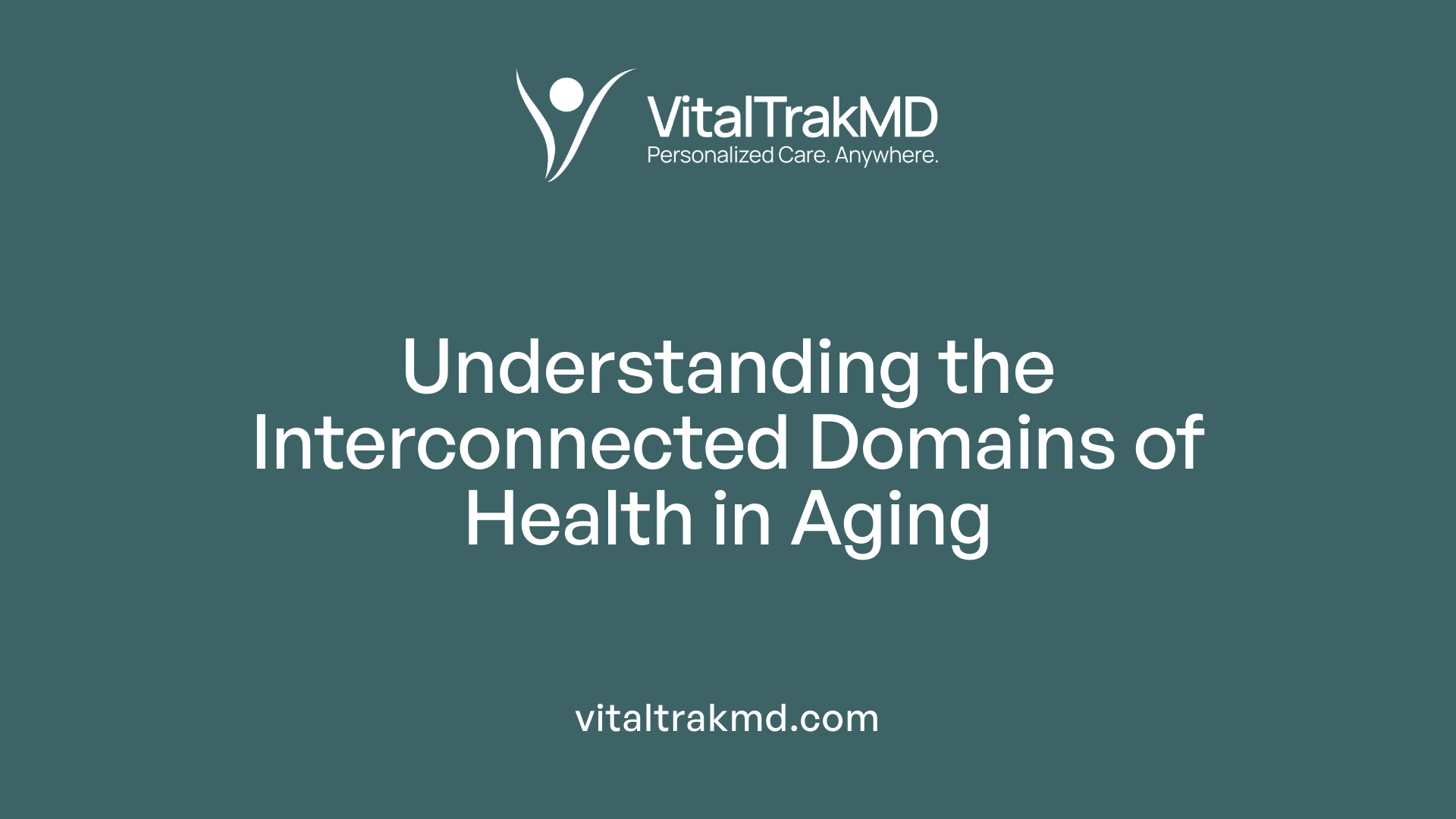
What is true about the domains of health in the context of aging?
In aging, health encompasses more than just the absence of disease; it involves a balanced integration of physical, mental, and social well-being. The World Health Organization (WHO) highlights this through its functional ability framework, which focuses on maintaining capabilities that enable older adults to live meaningful and independent lives.
Physical health includes managing chronic conditions, preventing illnesses through vaccinations and screenings, and maintaining mobility and strength. Regular preventive services such as blood pressure, cholesterol, diabetes, and cancer screenings are vital to detect issues early and manage health effectively. Vaccinations like the flu shot, pneumonia, and shingles help prevent severe illnesses.
Mental well-being is equally important. It involves cognitive health, emotional resilience, and access to mental health services. Addressing mental health concerns like depression, anxiety, and social isolation can significantly improve overall quality of life.
Social engagement and support are critical components. Strong social networks and community involvement contribute to emotional health and provide practical assistance. Programs that promote social participation can reduce loneliness and enhance a sense of purpose.
The WHO framework emphasizes that these domains are interconnected. Environmental factors, such as accessible healthcare, age-friendly infrastructure, and supportive policies, greatly influence outcomes. Social determinants like economic stability, social inclusion, and access to resources can either facilitate or hinder healthy aging.
Broader societal and environmental factors shape the aging experience. Creating age-friendly environments and ensuring equitable access to healthcare resources support the development and maintenance of functional abilities.
Healthy aging ultimately hinges on enabling older adults to build resilience and adapt, ensuring they can continue to contribute to society and enjoy a high quality of life despite health challenges.
Preventive Screenings and Vaccinations: Cornerstones of Senior Health
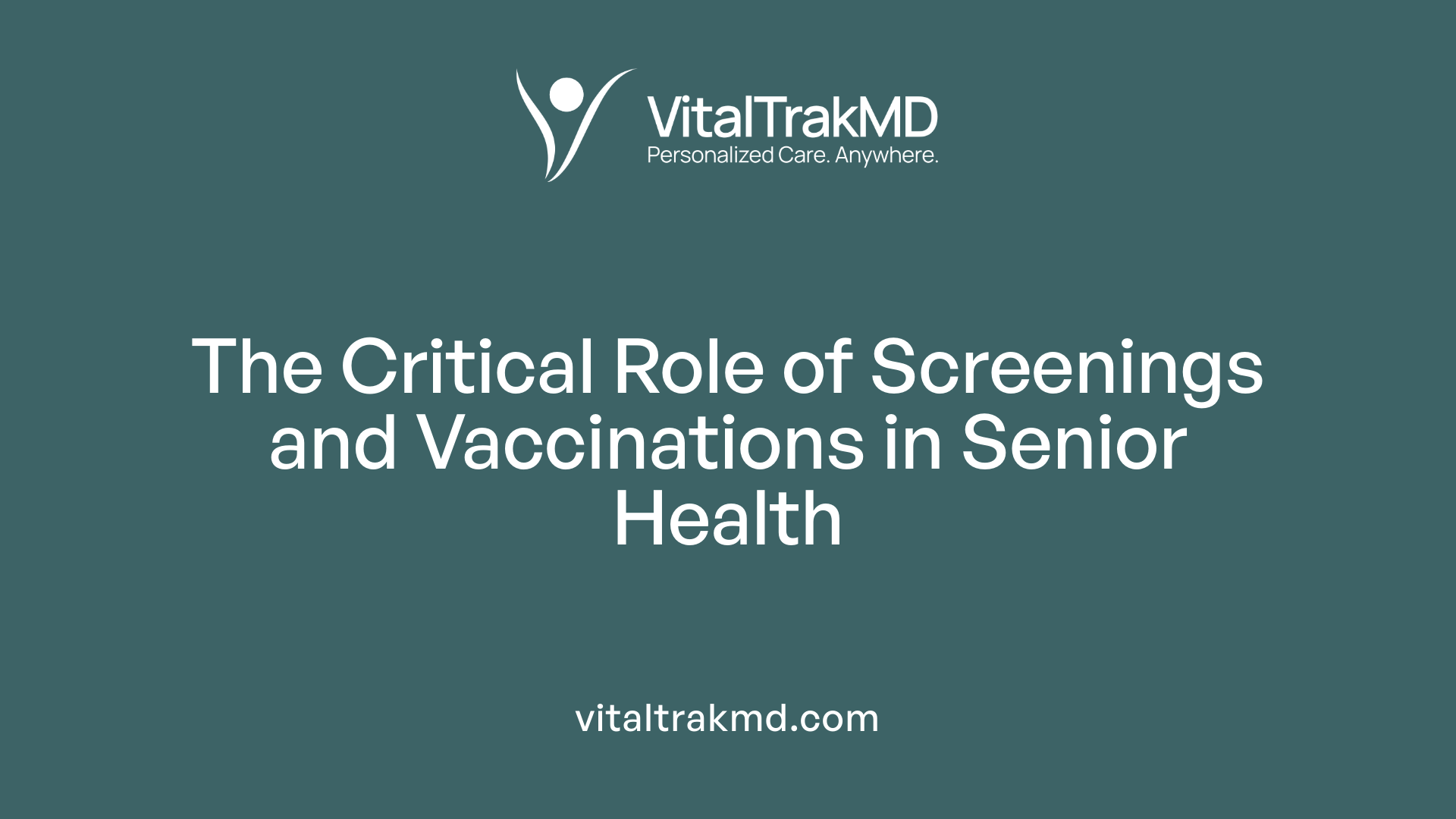
What role do preventive screenings and vaccinations play in senior health?
Preventive screenings and vaccinations are fundamental to maintaining good health among older adults. They serve two main purposes: preventing diseases before they develop and catching health issues early when treatment is most effective.
For seniors aged 65 and older, recommended vaccinations include annual flu shots—preferably high-dose versions for added protection—pneumococcal vaccines like PCV20 and PCV15 to ward off pneumonia, and shingles vaccines to prevent herpes zoster. These immunizations help prevent serious illness, complications, and hospitalizations.
Screenings are equally vital as they detect health problems like cancers—colorectal polyps via colonoscopy, breast cancer with mammograms every two years, and osteoporosis through bone density scans after age 65. Checks for high blood pressure, cholesterol, and diabetes are routinely performed to identify risk factors for heart disease and other chronic conditions early.
Early detection through these services allows for prompt management, reducing disease progression, and improving longevity. It also helps seniors maintain independence and enjoy a higher quality of life.
Despite their importance, barriers such as out-of-pocket costs, limited awareness, and access issues can hinder seniors from receiving recommended preventive care. Public health initiatives and policy reforms are underway to increase coverage and promote higher participation.
Overall, integrating regular screenings and vaccinations into routine healthcare is a crucial strategy for fostering healthy aging and reducing health disparities among older populations.
Guidelines and Recommendations for the Aging Population
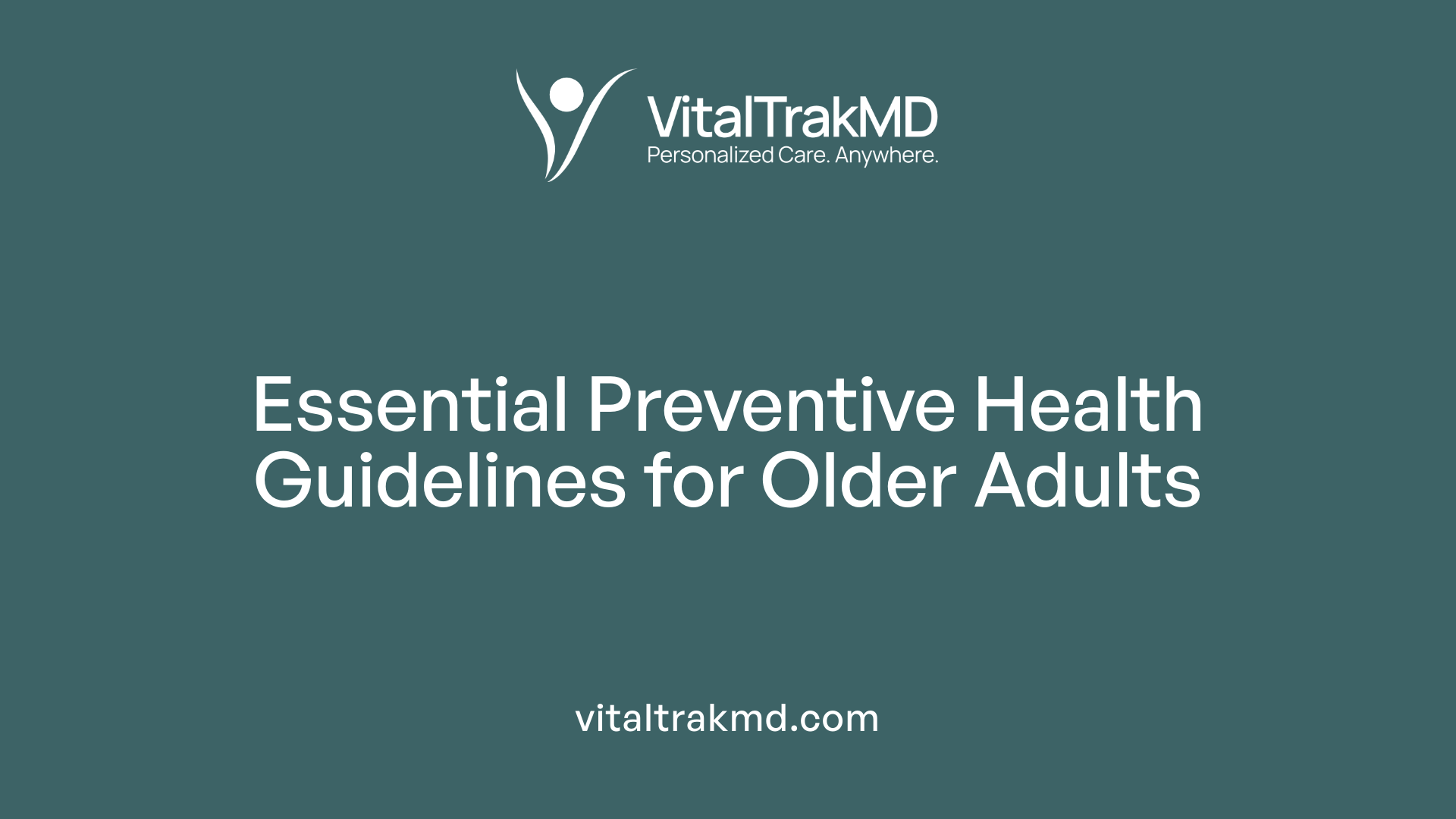
What are the common preventive health guidelines and recommendations for aging populations?
Preventive health care for older adults aims to identify health issues early and prevent future complications. Regular screenings are crucial; these include blood pressure, cholesterol, diabetes, and osteoporosis tests for women aged 65 and above. Cancer screenings like mammograms every two years for women aged 50-74 and colorectal cancer screening beginning at age 50, typically via colonoscopy, are also recommended.
Immunizations play an essential role in safeguarding seniors against preventable diseases. Annual flu vaccination is advised for everyone aged 65 and older, with high-dose options for better protection. Pneumococcal vaccines such as PCV15 or PCV20 are recommended to prevent pneumonia and its complications, along with shingles vaccines for age-appropriate immune boosting.
Fall prevention and safety measures are vital because falls are a leading cause of injury among older adults. Strategies include exercise programs that improve strength and balance, home safety modifications, and using assistive devices as needed.
A healthy lifestyle forms the foundation of good health in aging. Seniors are encouraged to follow balanced diets, stay physically active with activities like walking or swimming, engage in mental exercises, and maintain social connections. Routine health assessments, including mental health screening for depression and sensory evaluations for vision and hearing, support overall well-being.
Implementing these guidelines helps seniors maintain independence, reduce health risks, and enjoy a higher quality of life. Most preventive services are covered by insurance and Medicare, making access easier when services are utilized regularly.
Benefits of Preventive Care in Enhancing Quality of Life
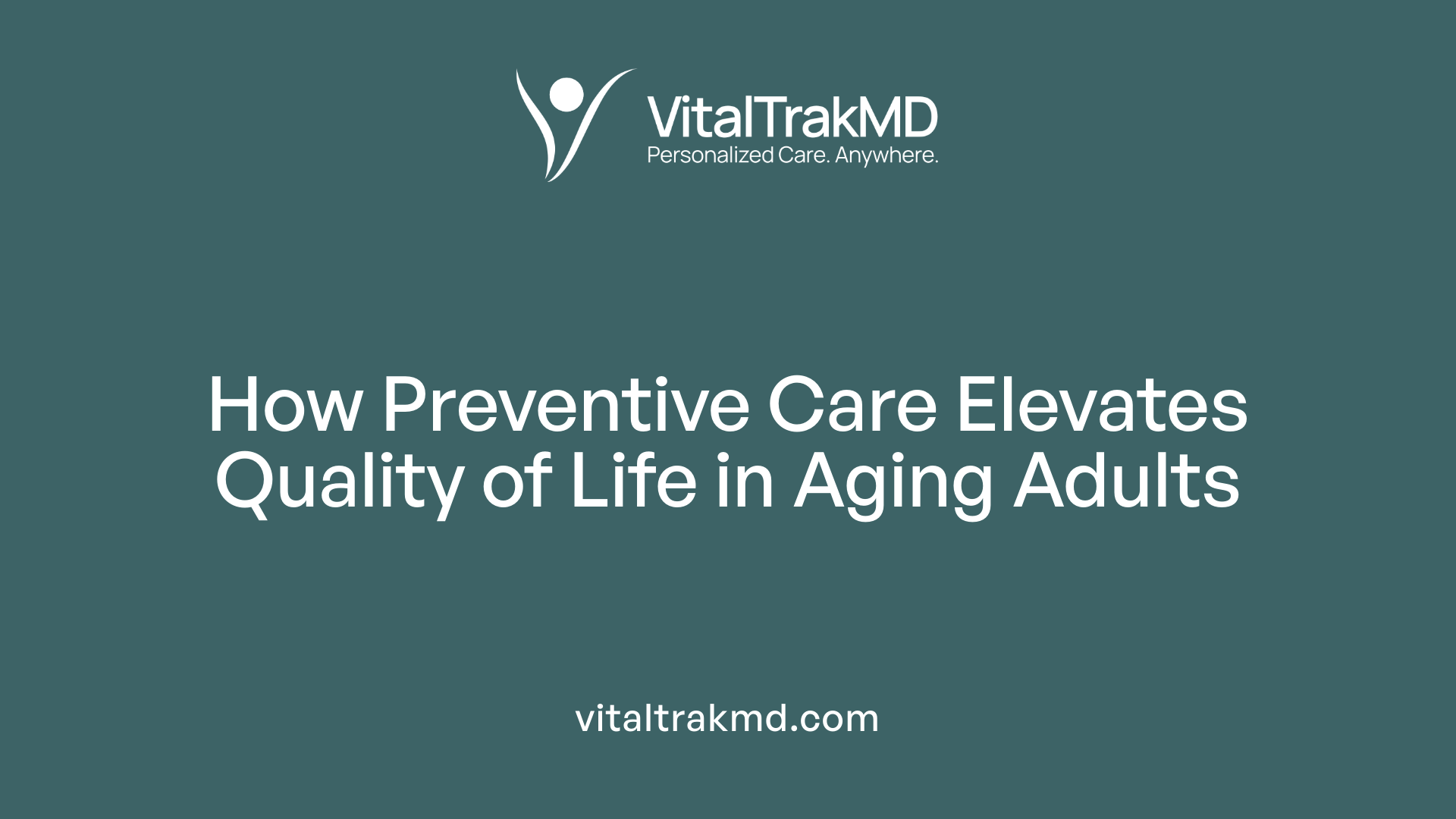
What are the benefits of preventive health care for older adults?
Preventive health care provides many advantages for seniors by catching health issues early and managing existing conditions effectively. Regular screenings for cancers like breast, colorectal, and lung help detect diseases when they are most treatable, often leading to better outcomes.
Vaccinations such as the flu shot, pneumonia, and shingles vaccines protect against serious illnesses, reducing hospital stays and complications. Routine health exams monitor vital signs, BMI, and overall health, informing timely interventions.
Proper management of chronic diseases like hypertension, diabetes, and osteoporosis is facilitated through regular checkups and personalized care plans. These efforts help seniors maintain independence, reducing the need for extensive medical interventions.
Community outreach programs, telehealth, and mobile clinics make preventive services more accessible, especially to those in remote or underserved areas. By promoting healthy lifestyles, including diet and exercise, preventive care also boosts mental health and emotional well-being.
Altogether, engaging in preventive health practices reduces healthcare costs, lowers the risk of morbidity and mortality, and enhances the overall quality of life and aging satisfaction in older adults.
Ensuring Access and Coverage for Preventive Services
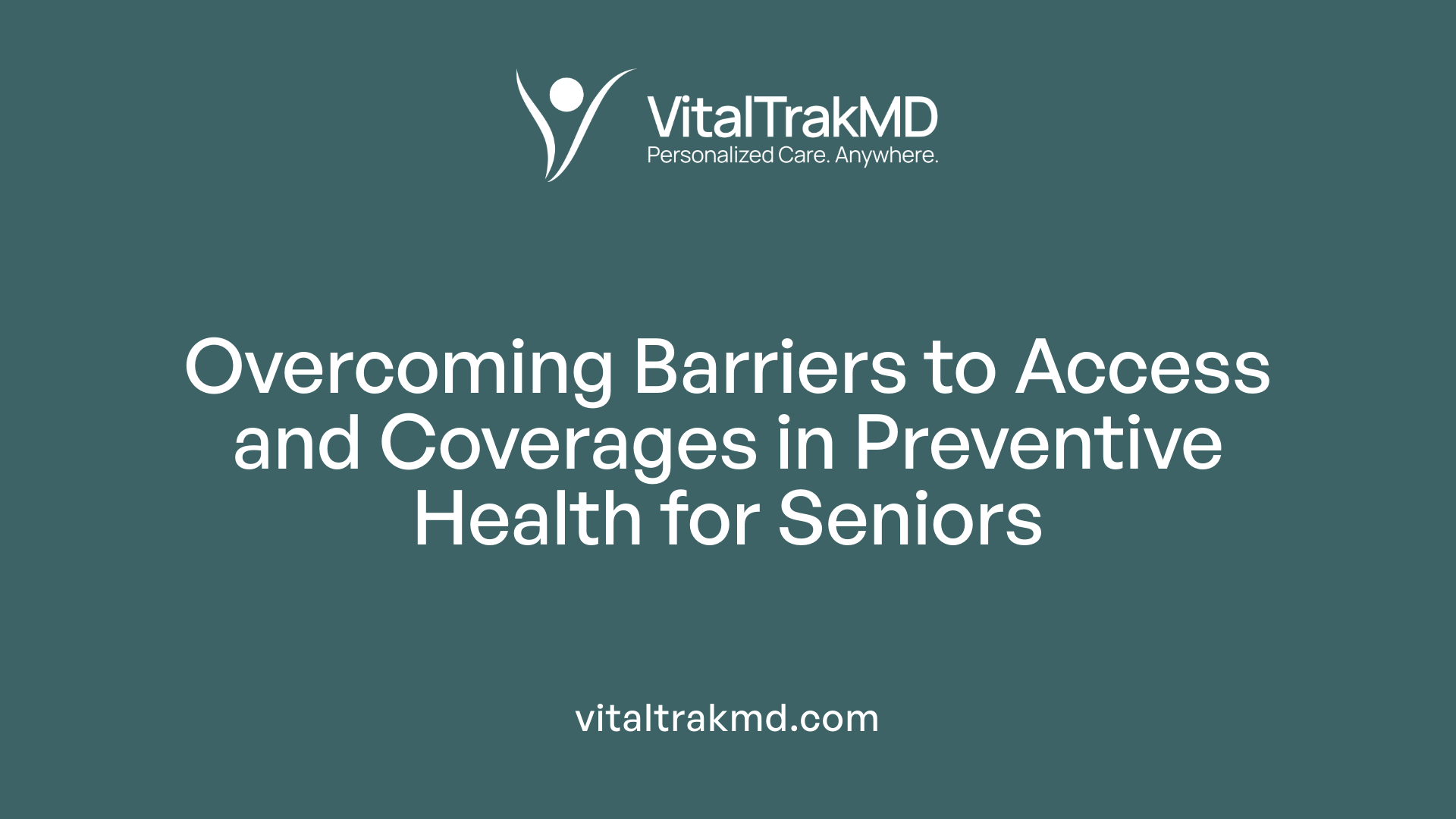
How important is access to and coverage of preventive health services for seniors?
Providing seniors with reliable access to preventive health services is vital for maintaining their health and independence. These services, which include screenings, vaccinations, and health counseling, facilitate early detection and effective management of chronic conditions such as heart disease, diabetes, and cancers.
The Affordable Care Act has played a significant role in expanding coverage, mandating that many preventive services are provided at no extra cost when conducted by in-network providers. This policy encourages higher participation among older adults, helping to prevent serious illnesses and improve quality of life.
Despite these measures, many seniors still underutilize preventive services due to various barriers. Financial constraints, lack of awareness, transportation issues, and limited access to healthcare providers are common hurdles, especially in underserved communities.
Ensuring comprehensive coverage and tackling these access issues are critical. By doing so, we can promote healthier aging, reduce healthcare costs caused by late-stage disease treatment, and support seniors' ability to live active, independent lives.
What are common barriers to preventive care among seniors?
Barriers such as cost-sharing, transportation difficulties, and limited health literacy hinder many seniors from accessing vital preventive services. Geographic barriers are also significant, particularly for those in rural areas where healthcare facilities might be far away.
How do insurance and public programs support preventative care?
Most health insurance plans, including Medicare, cover a broad range of preventive services without additional charges. These include screenings for cancers, blood pressure, cholesterol, diabetes, and vaccinations. Community programs and public health initiatives further facilitate access by offering services like immunization clinics and mobile health units.
What strategies can improve access to preventive services?
To enhance the delivery and uptake of preventive health services, strategies such as expanding mobile clinics, utilizing telehealth, and providing transportation assistance can be effective. Educating seniors about available services and their benefits is equally important.
Community-based interventions, like immunization drives at polling places or wellness programs at local centers, have shown promising results. Implementing policy changes that remove cost barriers, along with ongoing professional training on current screening guidelines, can ensure that more seniors receive timely preventive care.
| Strategy | Description | Expected Impact |
|---|---|---|
| Mobile health units | Bringing services directly to communities | Improve access for remote and mobility-limited seniors |
| Telehealth services | Virtual consultations for screenings and health advice | Increase convenience and reach |
| Transportation support | Providing rides to clinics or health events | Reduce missed appointments due to travel issues |
| Community outreach programs | Education and local screening events | Raise awareness and participation |
| Policy reforms | Eliminating or reducing out-of-pocket costs | Encourage higher utilization of preventive services |
Addressing these barriers through coordinated efforts can greatly improve health outcomes among seniors. Ensuring that preventive services are accessible and covered for all is essential for fostering a healthier aging population.
Building a Future of Healthy Aging
Preventive health services are fundamental to supporting aging individuals in leading longer, healthier, and more independent lives. By emphasizing early detection, immunizations, lifestyle modifications, and equitable access, healthcare systems can improve health outcomes, reduce costs, and foster a society where seniors thrive. Ensuring widespread awareness, removing barriers to access, and continually updating preventive guidelines are essential steps towards a healthier aging population. As we look to the future, proactive prevention remains the most effective strategy to promote wellness and resilience among older adults.
References
- Preventive Health Care For Seniors - FamilyDoctor.org
- The Importance of Preventative Care for Older Adults
- Satisfaction with Aging and Use of Preventive Health Services - PMC
- Preventive Care - Healthy People 2030 | odphp.health.gov
- The Importance of Preventative Screenings for Seniors
- Clinical Preventive Services for Older Adults: The Interface Between ...
- The Importance of Preventative Care for Seniors: A Guide to Aging ...
- 6 Preventive Screenings Seniors Should Prioritize
- Maintaining preventive coverage is vital to public health
Recent articles
Want to Feel Better and Live Healthier?
Join hundreds of patients taking control of their health with personalized care that fits their life – not the other way around.
Rated 4.8/5 by 32+ customers







